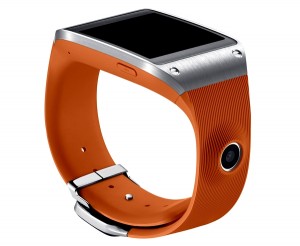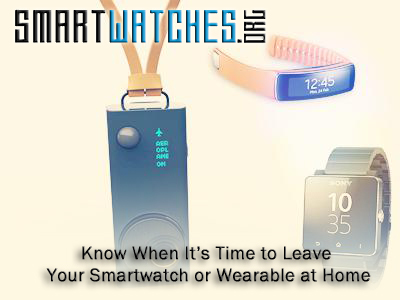When is it time to leave your smartwatch at home?
In light of news that universities are starting to ban the use of smartwatches during exams, it makes us wonder, where else are wearables and smartwatches not welcome?
Modern technology does require etiquette. For instance, don’t stare at your phone while someone is talking to you, it’s disrespectful.
Never answer a ringing phone, or allow a gadget to ring loudly during quiet meetings, at the theater or when you should be silent. Worse yet, you don’t look down at your smartphone – or your wrist – while you’re walking because it’s dangerous and rude.
Even if some of this stuff is common sense, that doesn’t mean we shouldn’t talk about it.
In cases like with the university exams and tests, it makes sense to outlaw modern tech. Students can look up the answers on any internet-ready device, which is definitely cheating. So, it’s a great example of a time when you should leave your smartwatch at home. Are there more scenarios like this?
Are there any times when you should leave your smartwatch at home? What about other wearables you can use, like fitness trackers?
Where Is Google Glass Banned?
A smartwatch or fitness tracker will always have a different use case than something like Google Glass.
Glass is a pair of augmented reality glasses that can record the surrounding environment.
You don’t have to leave your smartwatch at home as much as Glass.
 Early smartwatch models like the Samsung Galaxy Gear had a camera, but it’s not a big deal. Someone would know you’re recording them because you’d have to turn your wrist in their direction. It would be obvious.
Early smartwatch models like the Samsung Galaxy Gear had a camera, but it’s not a big deal. Someone would know you’re recording them because you’d have to turn your wrist in their direction. It would be obvious.
Google Glass is different. It can record the outside world, and those unfamiliar with tech would have no idea.
Of course, don’t let Google Glass frighten you, or the folks who use it. Glass actually does have a red blinking light when it’s recording or a video feed is live. If you’re astute you’ll be able to spot it, right along with someone wearing the device.
That doesn’t make it okay for Glass owners to walk around recording everything — in public or not.
Some people covet their privacy, and others might not want to be in videos or photos. While you can make the argument that “hey they’re in public, so what” it boils down to semantics.
If someone was recording you and you didn’t know about it, would you feel uncomfortable?
If you have time, you should read Stephen S. Intille and Amy M. Intille’s MIT report called New Challenges for Privacy Law: Wearable Computers that Create Electronic Digital Diaries.
Since smartwatches and fitness trackers don’t generally include a camera does that mean it’s okay to wear them everywhere? Not necessarily.
Are There Other Places Wearables Are Prohibited?
Places where Google Glass have been banned – again, which is somewhat different than smartwatches or fitness trackers – include: banks and outside ATMS, behind the wheel, at theaters, strip clubs, casinos, various restaurants, hospitals, sports grounds, concerts and more.
- Banks and outside ATMS
- Behind the wheel of a vehicle
- Theaters
- Strip clubs
- Casinos
- Various restaurants
- Hospitals
- Sports grounds
- Concerts and live events
That’s not to say wearables like smartwatches and fitness trackers should be banned in those same places, but it depends on the functionality and features offered. For instance, a lifelogger that takes images or video at continuous intervals would be frowned upon in theaters and may even be illegal if it captures the film you’re watching.
That makes it a little difficult to assess when and where these devices should be prohibited. It’s worse when you consider that the feature list is so fragmented between similar devices — there are smartwatches that have a still camera and webcam while others have nothing of the sort.
A group of three students each wearing a smartwatch could be doing completely different things with their device depending on what features it has. One might be taking pictures of an exam to share later. Another might be browsing the internet for answers. A third might simply be checking the time and how close they are to the end of the exam. You can’t always tell, because there are so many different types of wearables out there.
How Do You Know When to Leave Your Smartwatch at Home?
The best answer is to be smart about it. You know your wearable best and what it can do. If a particular feature or function is going to cause problems wherever you’re going, it might be best to leave it at home.
 A great rule to follow is that wherever you’re not allowed to use a smartphone — or have one out — you should also consider not using your wearable.
A great rule to follow is that wherever you’re not allowed to use a smartphone — or have one out — you should also consider not using your wearable.
It’s rude to play with your smartwatch while you’re at dinner or sitting in a restaurant; even more so if you start talking to it loudly like a Bluetooth headset. It’s not a good to be playing with your fitness tracker or watch in the middle of a dark theater, the bright screen might disturb others. Furthermore, the vibrations, notification alerts and more might ruin the experience for those nearby. We’re not even going to bother discussing why it’s a bad idea if your device is equipped with a camera.
The same goes for concerts, at banks or near ATMS — especially in a queue for one — casinos, and most of the places where Google Glass has been banned.
Now, if all you’re doing is using your smartwatch to check the time and monitor incoming notifications you might be okay. You’ll have to assess the scenario on a case by case basis even in that regard. A college professor isn’t going to be accepting of you looking at a wearable while you’re taking an exam, it doesn’t matter whether you intended to use the device for cheating or not.
Don’t Use a Wearable or Smartwatch While You’re Behind the Wheel
 As a side note, never use a wearable or mobile device behind the wheel of a vehicle – that includes smartwatches, fitness trackers, lifeloggers, AR headsets, smartphones, tablets and more.
As a side note, never use a wearable or mobile device behind the wheel of a vehicle – that includes smartwatches, fitness trackers, lifeloggers, AR headsets, smartphones, tablets and more.
You should be paying attention to the road. Our roadways are already dangerous enough, nevermind the fact that there are so many distracted drivers rushing from place to place these days.
A recent study by Transport Research Laboratory posits that smartwatches might actually be more distracting for drivers than smartphones.
You don’t necessarily have to leave your smartwatch at home, just don’t play with it, and keep your hands on the steering wheel instead.
What do you think? Are there any places you know where wearables and smartwatches should be prohibited? What about lifeloggers and AR/VR tech like Google Glass? When do you leave your smartwatch at home?

